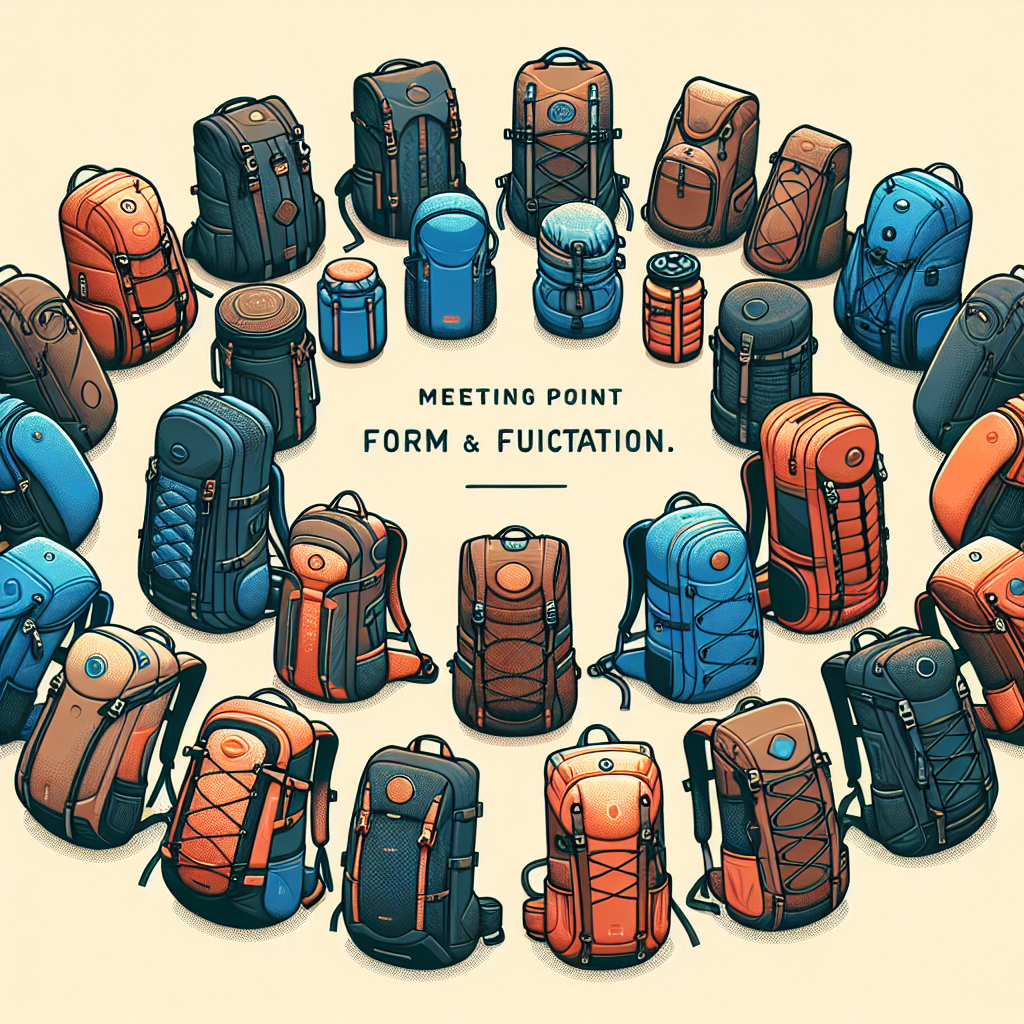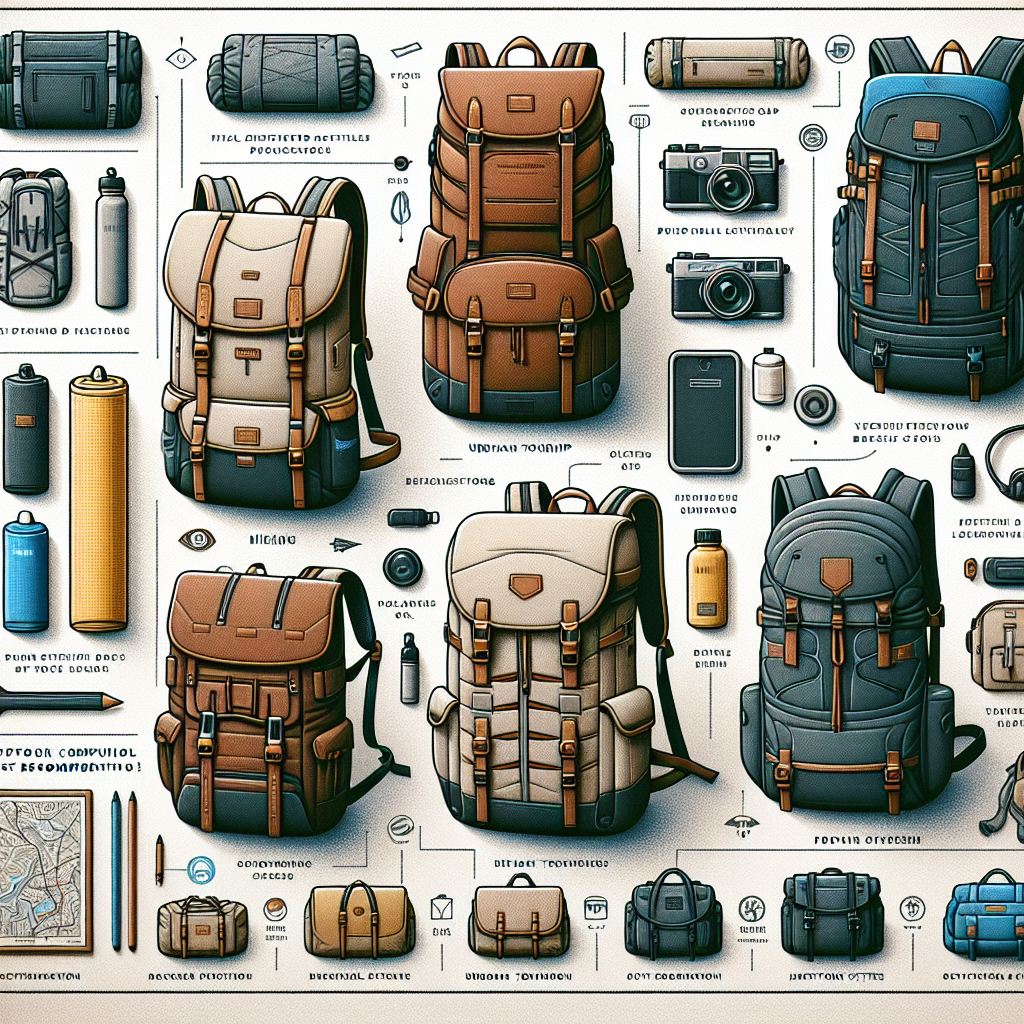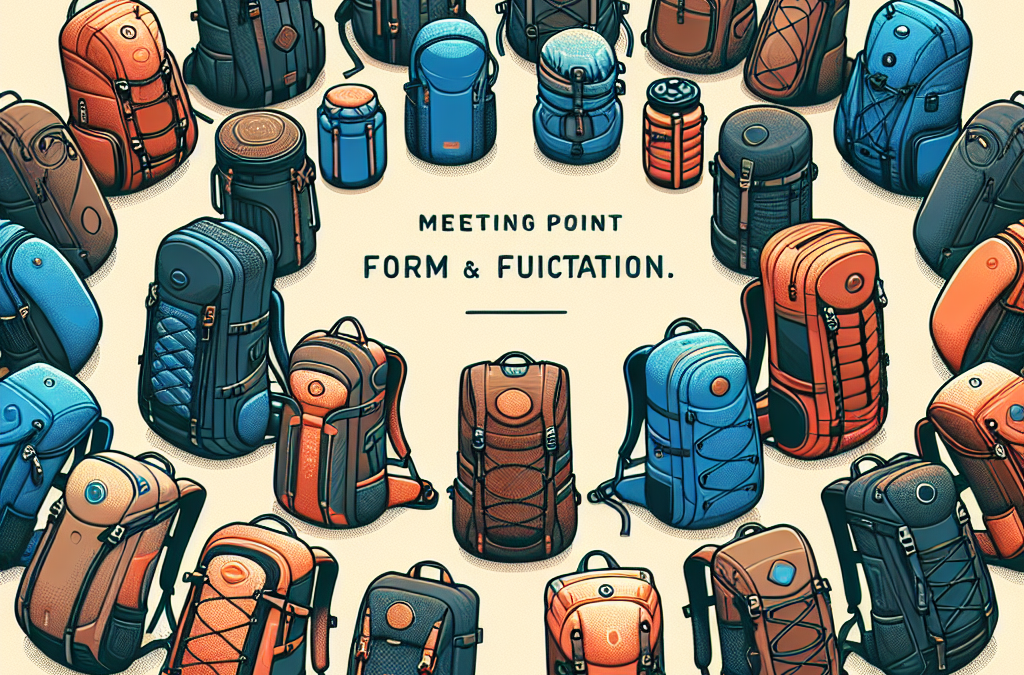As a passionate adventurer, finding the ideal backpack is probably at the top of your checklist when you’re preparing for a journey. This guide, “Backpack Selection: Choosing The Right Gear For Your Trip,” exists to help you find that perfect backpack. Ensuring that you choose the most efficient, comfortable, and functional gear is crucial. The article provides you with essential information that will ease the selection process, offering you an exciting exploration of iconic backpacks that perfectly match different travel scenarios. It is more than just a selection; it’s about making your travel experience seamless and exceptional.
Understanding Your Trip Needs
Selecting the right backpack for your trip isn’t as simple as choosing the first one you see on the shop shelf. Understanding your specific requirements is the first critical step in the selection process.
Defining the trip type
The type of trip you’re embarking on primarily determines the kind of backpack you should opt for. Are you planning a day-long hike, a weekend camping expedition, or an extended backpacking trip? Each trip type has specific demands – camping requires more gear; a day trip requires minimal supplies, and a lengthy backpacking trip might necessitate specialized equipment.
Estimating the trip duration
The length of your trip plays a massive role in your backpack selection. Short trips typically require smaller backpacks as you will be carrying fewer belongings. However, if you’re planning an extended trip, you might need a larger backpack to carry all the essentials.
Considering weather conditions
Weather conditions in your travel destination can also influence your backpack choice. If you’re heading for rainy climates, a waterproof backpack with a rain cover is a wise decision. Conversely, if your trip involves basking under the hot sun, a backpack with good ventilation will keep your back cool and comfortable.
Assessing physical conditions
Your physical health and capabilities also play a part in selecting the right backpack. Consider the weight and size you’re comfortable carrying, especially if you’ll be walking long distances. Additionally, any pre-existing health conditions like a bad back or weak shoulders should factor into your selection.
Types of Backpacks
Backpacks come in a variety of types, designed to fit different trip types and duration.
Daypacks
Ideal for day trips, hikes, and city tours, daypacks are lightweight, compact, and convenient to carry. They commonly range from 20 to 35 liters, offering enough space for your essentials without burdening you with unnecessary weight.
Multi-day packs
Great for weekend getaways or multi-day hikes, these packs range from 35 to 50 liters. They’re designed to carry all the gear, food, and clothing you’ll need for a couple of nights in the wild.
Hiking backpacks
These are designed specifically for hikers, giving you ample room to carry all the necessities while also ensuring superior comfort and mobility.
Travel backpacks
Slightly larger and more robust, travel backpacks can carry everything you need for extended trips, from clothes to travel accessories. They come with various features such as draggable wheels, multiple compartments, and lockable zippers for added convenience and security.
Climbing backpacks
Climbing backpacks prioritize comfort and mobility while offering specific features like gear loops and rope straps. They’re typically lightweight and compact, allowing for easy and quick movement.

Right Size Backpack
The right backpack size is determined by your body dimensions and the amount of gear you’ll be carrying.
Understanding backpack sizing
Backpack sizes are generally specified in liters, which refers to the volume of space available inside. Your body measurements, however, play a big part in determining the right fit.
Measuring torso length
A backpack should match your torso length for ultimate comfort. To measure your torso length, start from your seventh cervical vertebra at the base of your neck down to the spot level with your hip bones.
Importance of hip size
Your hips will carry most of the backpack’s weight, so getting a backpack that fits your hip size comfortably is crucial. Look for backpacks with adjustable, padded hip belts.
Adjusting for comfort and load
A well-adjusted backpack distributes weight evenly, taking the strain off your shoulders and spine. Use the various straps and adjustments to ensure a snug yet comfortable fit that balances out the load.
Features to Look For
The best backpacks offer functional features that make your trip more convenient and comfortable.
Compartments and pockets
Having multiple compartments and pockets allows for better organization of your belongings. Some backpacks also feature external pockets for items you need quick access to or hydration pockets for water bottles.
Rain Cover
If you’re expecting wet weather or plan to cross water bodies, a rain cover is a handy feature. It protects your belongings from getting wet and damaged.
Ventilation system
Backpacks with a good ventilation system prevent your back from getting sweaty by allowing air to circulate. This is particularly useful in hot conditions or during strenuous activities.
Padded hip belt and shoulder straps
Padding on the hip belt and shoulder straps provides further comfort by evenly distributing the load across your body.
Hydration compatibility
For hikers and climbers, backpacks with a hydration system, such as a reservoir or bladder, can be a significant advantage. It reduces the need for water bottles and allows you to drink hands-free on the move.

Materials and Durability
The quality and durability of a backpack largely depend on the materials used and how they’ve been put together.
Common backpack materials
Nylon and polyester are common backpack materials due to their strength and durability. Canvas backpacks, though heavier, are known for their ruggedness. Ripstop materials are excellent for lightweight yet sturdy backpacks.
Durability factors
The weave and denier of the materials, quality of zippers and buckles, and the execution of the stitching are all durability factors that you should consider.
Weather-resistance characteristics
Look for materials with weather-resistant properties. Coated materials or those with a DWR (durable water repellent) finish are particularly useful for wet conditions.
Fit and Comfort
comfort should always be a priority when choosing a backpack.
Fitting a backpack properly
Ensure the backpack fits correctly with the hip belt resting comfortably on your hips and the shoulder straps resting on your shoulders without any gap.
Using adjustable features
Use the bag’s adjustable straps and belts to customize the fit and ensure even weight distribution.
Ensuring comfortable load distribution
Ensure you pack your gear correctly. Dense items should be placed in the middle, close to your back. Light items can be packed near the top and bottom.
Adjusting for gender and body type
Some backpacks are designed specially to fit different genders and body types. Women-specific backpacks, for example, have narrower shoulder straps and a conical shape better suited for a woman’s body.
Price Considerations
Budget is a crucial factor to consider when choosing a backpack.
Determining your budget
Before shopping, identify how much you’re willing to spend. Remember, a higher price often means better quality and more features.
Comparing prices and features
Do a side-by-side comparison of various backpacks within your budget range. Prioritize your needs and see which ones offer the best value for money.
Investing in quality
A quality backpack might come with a higher price tag, but it’s often a worthwhile investment in the long run. It will not only last longer but also offer better comfort and functionality.
Cost of maintenance and repair
Also factor in the potential cost of upkeep. Some higher-end backpacks may require specialized cleaning or costly repairs.
Backpack Maintenance and Care
Taking care of your backpack can significantly increase its lifespan.
Cleaning instructions
Read the manufacturer’s cleaning instructions. While some backpacks can be machine-washed, others may require hand-washing or spot cleaning.
Storing backpacks
Store your backpack in a cool, dry place to prevent mold growth. Avoid keeping them in damp, humid areas or in places with exposure to sharp objects or pets.
Repairing minor damages
Minor damages like broken zips or minor tears can often be repaired at home using a sewing kit or some adhesive.
Conditions warranting a replacement
If your backpack has significant wear and tear, compromised functionality, or irreparable damage, it might be time for a new one.
Environmental Impact
The production and disposal of backpacks can impact the environment.
Sustainability issues
The production process for some materials used in backpacks can be damaging to the environment. Similarly, backpacks that are not disposed of correctly can contribute to landfill waste.
Choosing eco-friendly materials
Opting for backpacks made from eco-friendly or recycled materials is a step towards sustainable travel.
Proper backpack disposal
Ensure you dispose of your backpack responsibly. Some brands offer recycling programs, or you might be able to donate your old bag.
Supporting responsible manufacturers
Support brands that prioritize sustainable practices, from using eco-friendly materials to implementing fair trade practices.
Top Backpack Brands
The backpack market is packed with numerous brands, but some stand out for their quality, durability, and innovative features.
Overview of leading manufacturers
Prominent brands such as Osprey, The North Face, Deuter, Gregory, and Patagonia stand out due to their reputation for quality and design.
Unique features of top brands
Each brand offers unique features. For example, Osprey’s anti-gravity suspension, or Deuter’s Vari Quick System, make them stand out in a crowded market.
Comparing customer reviews and ratings
Customer reviews and ratings give you firsthand insight into a backpack’s performance, comfort, and durability. Consider these before finalizing your purchase.
Finding authorized retailers
Purchase only from authorized retailers or directly from the brand’s website to ensure you get an authentic product with a valid warranty.
Remember, selecting a backpack is an investment in your travel comfort and convenience. Take the time to research, try out various options, and find the best match for your travel needs. You’ll thank your dedicated efforts when you’re on your trip, comfortably carrying all your necessities, ready to enjoy every moment of your adventure!

